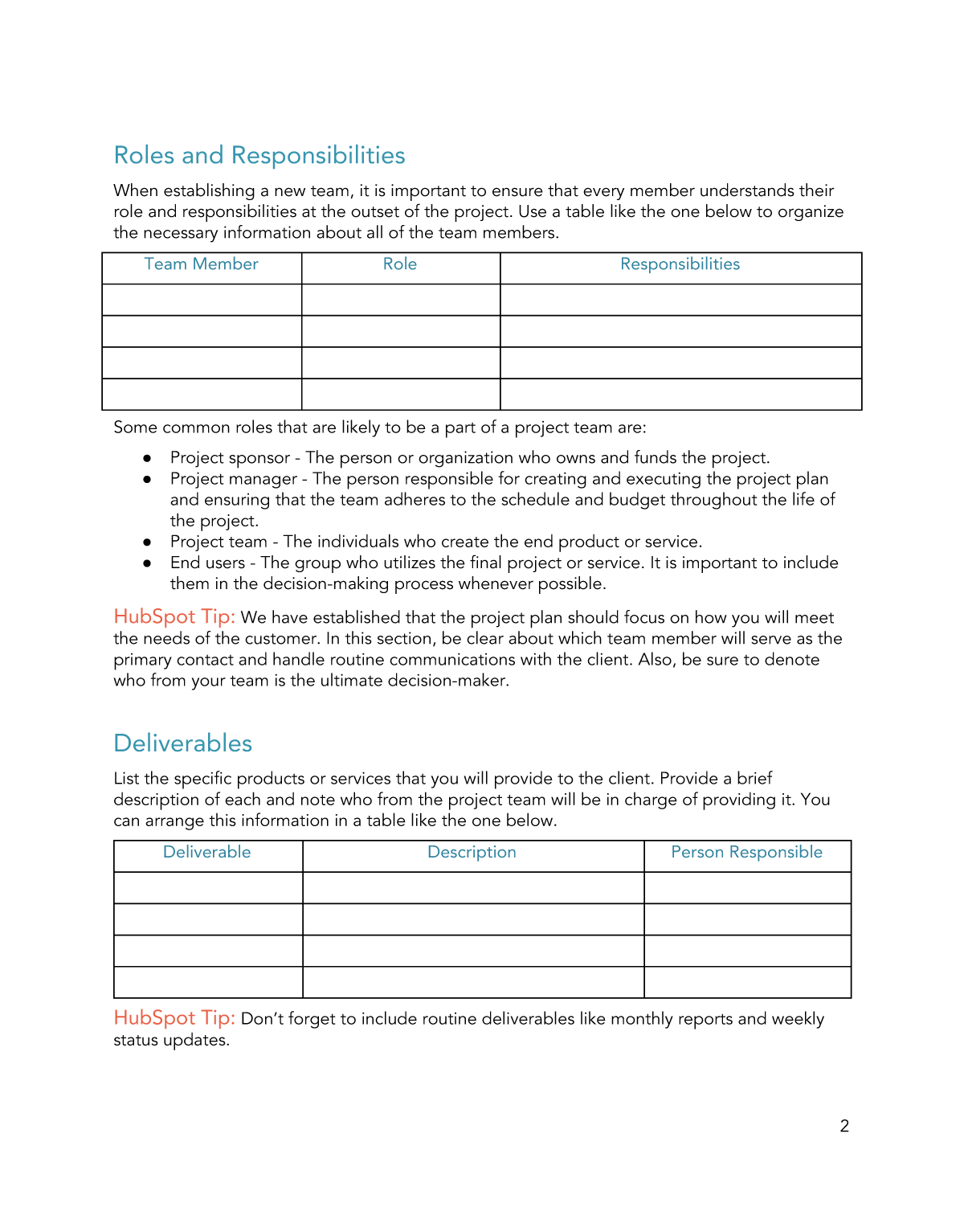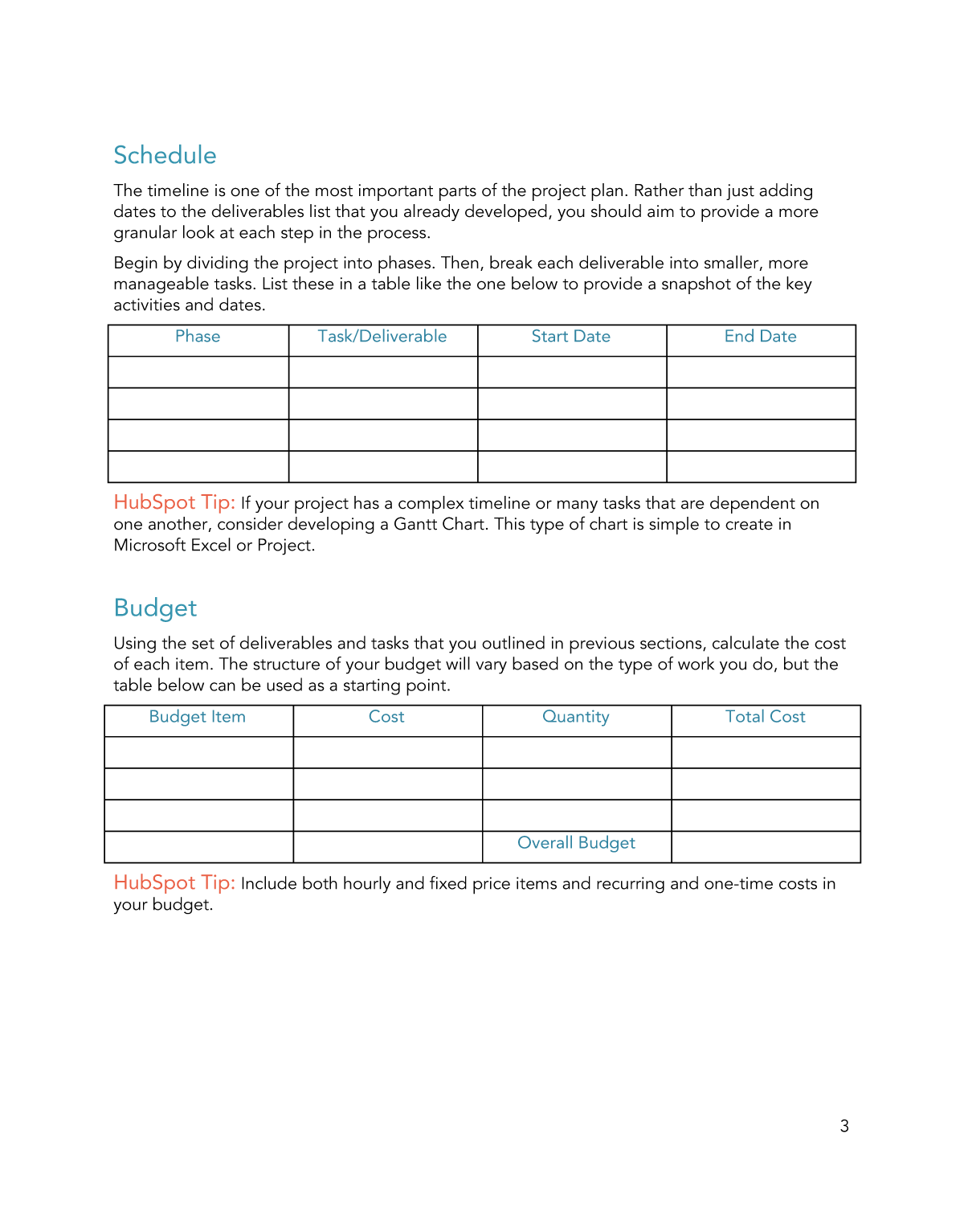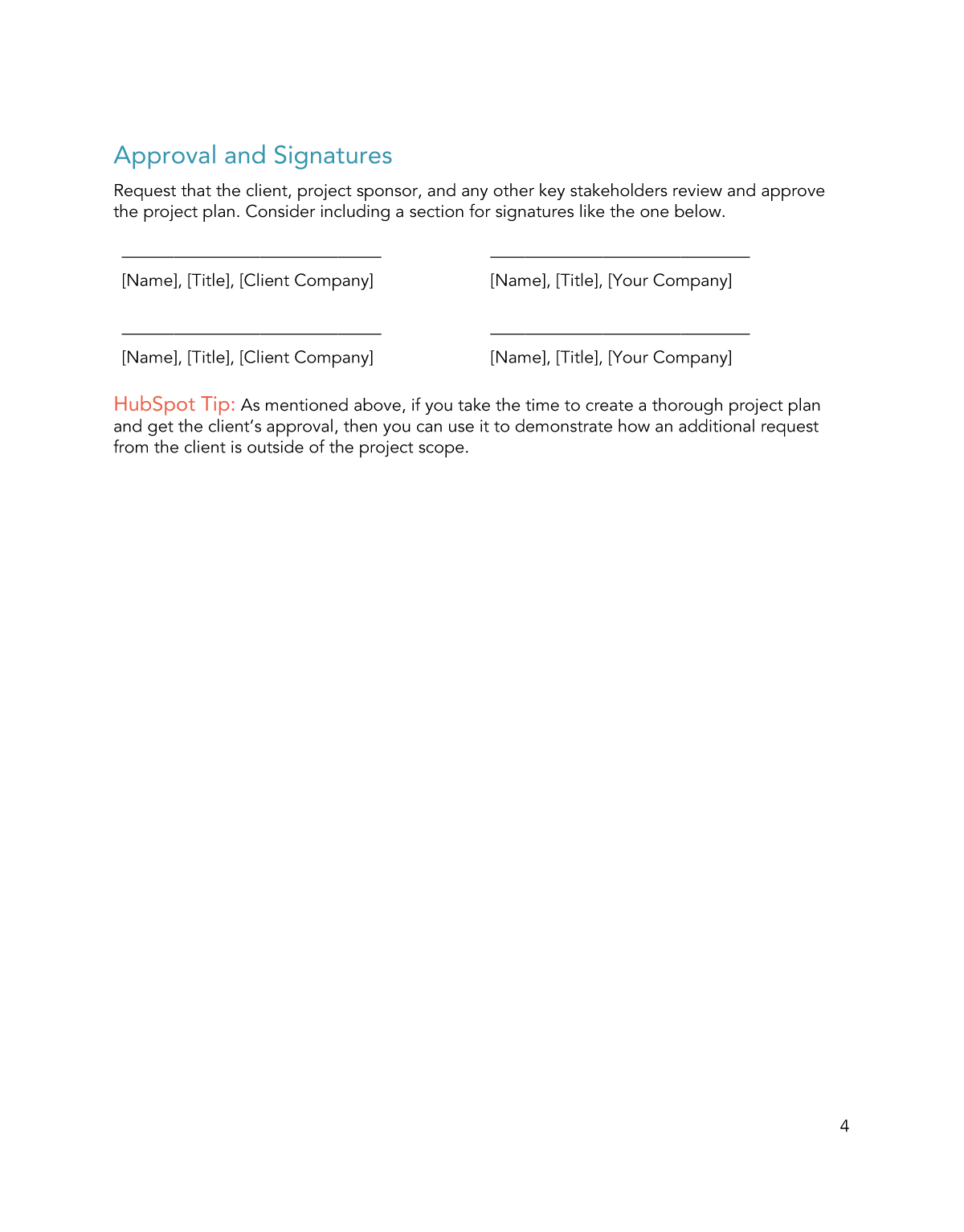Project Plan Template
A project plan is an essential project management tool that can help you stay on schedule and within budget. It describes the details of your project, from the scope and objectives to the timeline and cost estimates.
HubSpot Tip: A project plan can vary based on the size and complexity of the project. This template provides general guidelines, but you may need to add or remove sections to tailor it appropriately to the needs of your specific project.
Overview
In this section, you should introduce the key components of the project. Think about what your client needs and why they engaged you to complete the project. What is the problem that you need to solve? Who are the main stakeholders?
HubSpot Tip: Consider your project plan a living document. As circumstances, timelines, team members, and objectives change over the life of your project, make the appropriate adjustments in the project plan and redistribute it to the project team.
Scope
This section sets the foundation for your project and is important for gaining consensus from all stakeholders on what the project will entail. Include a broad description of all of the deliverables you will provide to the client and every activity that will occur.
In this section, it is important to not only delineate what is required in the project, but also to explain what will not be included.
HubSpot Tip: If your customer asks for additional work as the project progresses, the project plan, and in particular the Scope section, serves an excellent reference document to explain why the work cannot be completed without changes to the budget or timeline.
Objectives
You already described the client’s needs in general terms in the Overview section. Now, you should list the objectives in more detail, quantifying the expected results with as much specificity as possible. Consider organizing the objectives in a list, as shown below.
1. Objective 1
2. Objective 2
3. Objective 3
HubSpot Tip: Whenever possible, design your project objectives to be SMART (Specific, Measurable, Attainable, Realistic, and Timely). Using this type of objective as a benchmark allows you to measure your success.
Roles and Responsibilities
When establishing a new team, it is important to ensure that every member understands their role and responsibilities at the outset of the project. Use a table like the one below to organize the necessary information about all of the team members.
Team Member
Role
Responsibilities
Some common roles that are likely to be a part of a project team are:
Project sponsor - The person or organization who owns and funds the project.
Project manager - The person responsible for creating and executing the project plan and ensuring that the team adheres to the schedule and budget throughout the life of the project.
Project team - The individuals who create the end product or service.
End users - The group who utilizes the final project or service. It is important to include them in the decision-making process whenever possible.
HubSpot Tip: We have established that the project plan should focus on how you will meet the needs of the customer. In this section, be clear about which team member will serve as the primary contact and handle routine communications with the client. Also, be sure to denote who from your team is the ultimate decision-maker.
Deliverables
List the specific products or services that you will provide to the client. Provide a brief description of each and note who from the project team will be in charge of providing it. You can arrange this information in a table like the one below.
Deliverable
Description
Person Responsible
HubSpot Tip: Don’t forget to include routine deliverables like monthly reports and weekly status updates.
Schedule
The timeline is one of the most important parts of the project plan. Rather than just adding dates to the deliverables list that you already developed, you should aim to provide a more granular look at each step in the process.
Begin by dividing the project into phases. Then, break each deliverable into smaller, more manageable tasks. List these in a table like the one below to provide a snapshot of the key activities and dates.
Phase
Task/Deliverable
Start Date
End Date
HubSpot Tip: If your project has a complex timeline or many tasks that are dependent on one another, consider developing a Gantt Chart. This type of chart is simple to create in Microsoft Excel or Project.
Budget
Using the set of deliverables and tasks that you outlined in previous sections, calculate the cost of each item. The structure of your budget will vary based on the type of work you do, but the table below can be used as a starting point.
Budget Item
Cost
Quantity
Total Cost
Overall Budget
HubSpot Tip: Include both hourly and fixed price items and recurring and one-time costs in your budget.
Approval and Signatures
Request that the client, project sponsor, and any other key stakeholders review and approve the project plan. Consider including a section for signatures like the one below.
______________________________ ______________________________
[Name], [Title], [Client Company] [Name], [Title], [Your Company]
______________________________ ______________________________
[Name], [Title], [Client Company] [Name], [Title], [Your Company]
HubSpot Tip: As mentioned above, if you take the time to create a thorough project plan and get the client’s approval, then you can use it to demonstrate how an additional request from the client is outside of the project scope.



